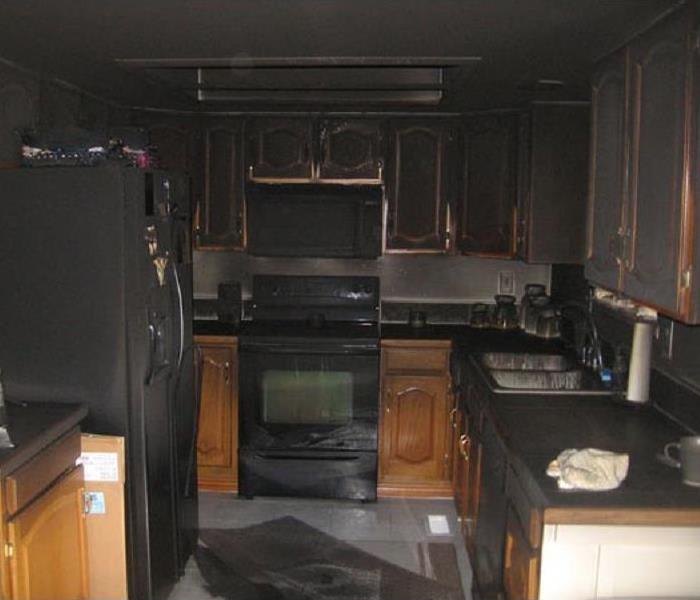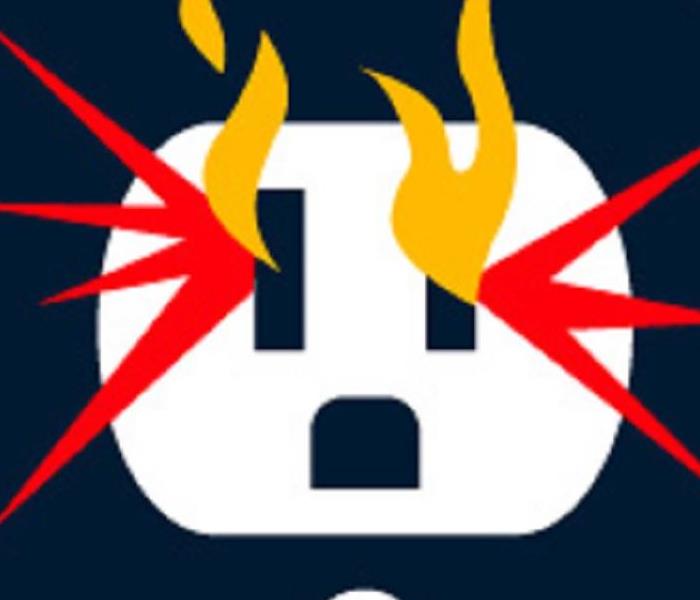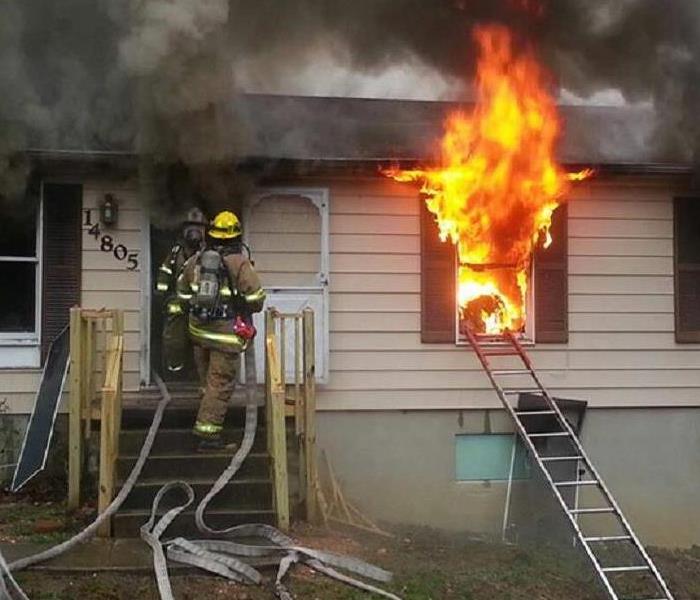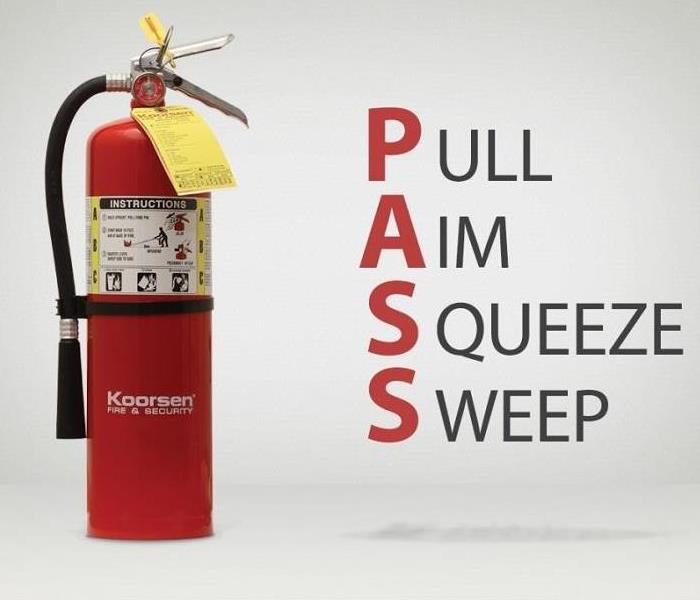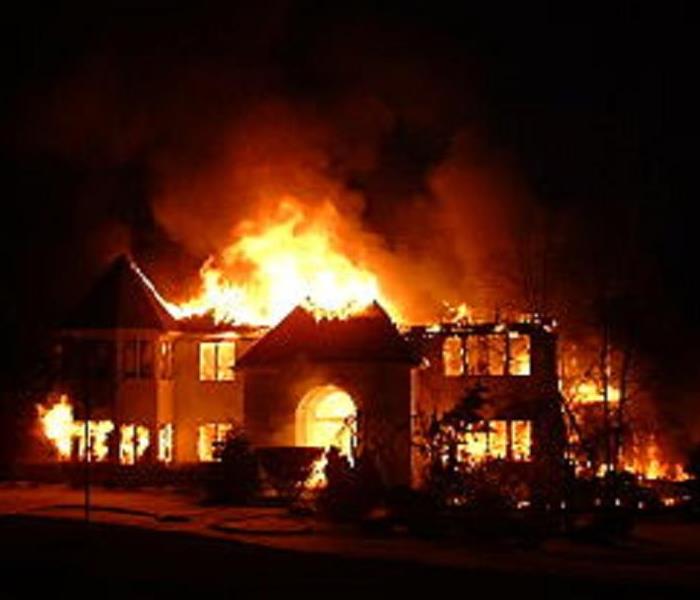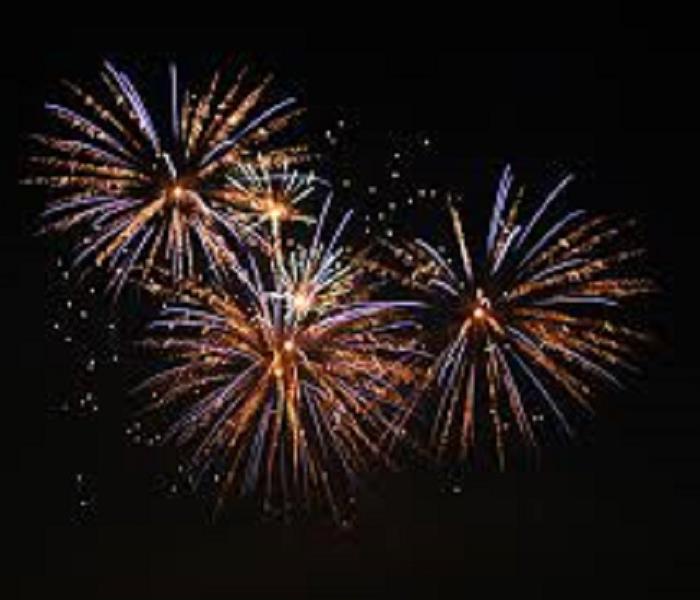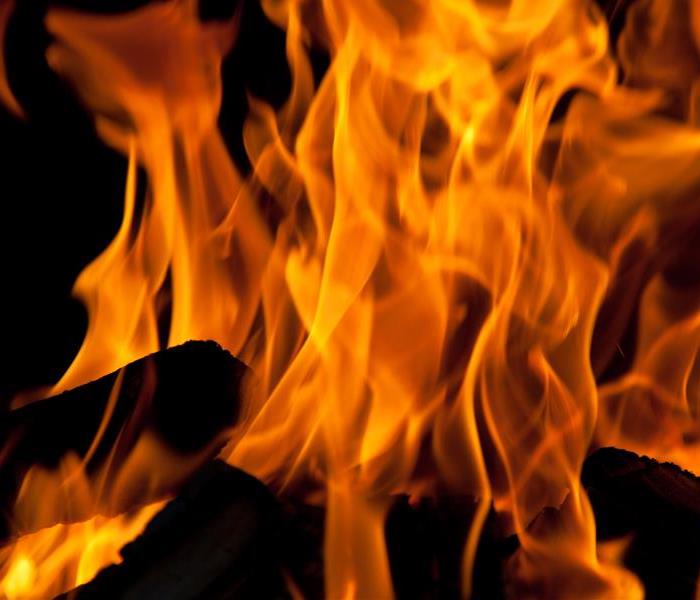Recent Fire Damage Posts
Syracuse Trusts SERVPRO for Fire Damage Restoration
6/28/2022 (Permalink)
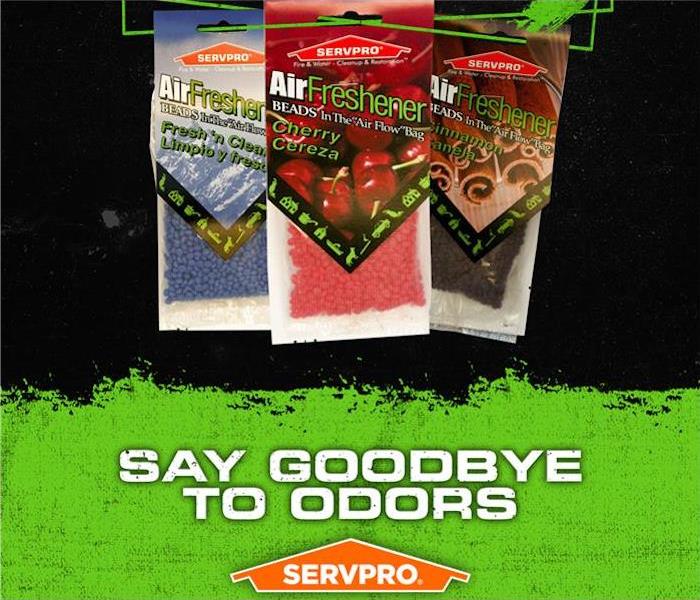 SERVPRO says--Say goodbye to odors when we clean and restored your fire damaged home in Syracuse.
SERVPRO says--Say goodbye to odors when we clean and restored your fire damaged home in Syracuse.
How SERVPRO Deodorizes Syracuse Properties After Fire Damage?
Restoration of fire damage to Syracuse properties involves removing the smoke and soot residue and deodorizing the odors. SERVPRO technicians use several deodorizing techniques depending on the type, intensity, and nature of the odor-causing particles present in the fire-damaged property.
SERVPRO technicians deal with two types of odors after fire damage to your Syracuse home-
- Real odors, and
- Imaginary or psychological odors–Phantosmia
Real odors result from burnt substances that release odor molecules producing a sensation of smell by interacting with our Olfactory receptors. On the other hand, imagery or psychological odors are odors that people think they smell. Under some circumstances, a fire-damaged building can stimulate imaginary odors. Imaginary odors are also called heightened awareness odors, as certain circumstances make an individual more aware of odors. Residents expect smoky odors after a house fire.
SERVPRO technicians not only treat and neutralize real odors, but we also address imaginary odors to leave your home smelling “Like it never even happened.”
Deodorization Steps During House Fire Cleanup
Not all odors in your fire-damaged Syracuse home come from a single source. Consequently, SERVPRO technicians. The four basic steps that technicians use during the deodorization of fire damage to residential buildings include:
- Removal of the odor source and the debris: Rather than attempting to deodorize the source, SERVPRO technicians prioritize removing it entirely. Technicians remove charred structures and other debris before implementing any deodorizing process.
- Cleaning to remove odor-causing residues: Small particles of odor-causing substances keep releasing odor molecules if technicians don’t remove them properly. Hence, cleaning the residues is crucial in combating odors after a fire incident.
- Recreating conditions that caused odor penetration: As odor-causing particles formed during a fire are hot, they can penetrate porous surfaces. SERVPRO technicians must recreate the conditions that made the particles travel and penetrate the surface to neutralize these particles. Creating a fog or mist of the deodorizer can allow the deodorizer molecules to penetrate surfaces and neutralize foul-smelling particles.
- Seal the surfaces: Although sealing is not required in all situations, it can be especially effective in extreme odor situations. If removing the odor is too expensive or impractical, SERVPRO technicians use alcohol-based shellac or acrylic sealers to contain the odor-causing particles.
Deodorizing Agents SERVPRO Technicians use in Fire Damaged Syracuse Homes
Neutralizing the many types of odors after fire damage requires more than one type of deodorizing action. The most common type of deodorizers that SERVPRO technicians use to combat fire and smoke odors include:
- Masking agents: Masking agents cover malodors with a more pleasant smell. They are of little use to combat real odors as they won’t eliminate them. However, these are great for combating imaginary or psychological odors.
- Pairing agents: Combine chemically with an odor-causing molecule to alter its chemical nature. SERVPRO technicians use deodorizing agents with both paring and masking agents. The two ways paring agents work include absorbing airborne odor particles and causing them to precipitate so that they can be cleaned up and neutralizing the odor molecule by combining with it chemically and rendering it odorless.
- Adsorption filter agents: These agents work by capturing odor-causing molecules from the air and holding them onto the surface. Activated charcoal used in the air filtration systems eliminates the odor by this mechanism.
SERVPRO is here to help you in the time of your need; We’re Faster To Any Size Disaster. Call SERVPRO of East Onondaga County at (315) 446-8776.
Managing Odor When Addressing Fire Damage in Fayetteville Homes
5/6/2022 (Permalink)
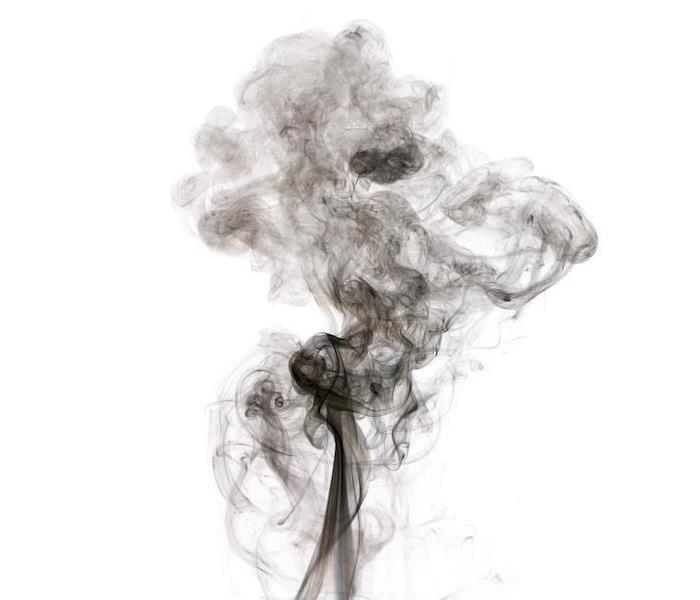 Fire damage restoration is no DIY project. SERVPRO technicians have the training and experience for ever phase needed for your home.
Fire damage restoration is no DIY project. SERVPRO technicians have the training and experience for ever phase needed for your home.
SERVPRO Helps Fayetteville Homeowners Identify and Remove Smoke Remnants Causing Odor
A fire is one of the most dangerous events that can affect your Fayetteville home. Though the flames have irreversible effects on structural materials and belongings, it is essential to note that the dangers of fire go beyond the flames. The potential for harm remains after the fire has been extinguished from lingering byproducts. Smoke residues attach to surfaces and become embedded in porous materials like carpets and upholstery. The smell can stay for an extended period jeopardizing the indoor air quality.
Knowing the dangers of smoke and taking immediate action like cleaning after fire damage in a Fayetteville home is essential. Smoke residues often require specialized cleaning methods. Therefore you should seek out professional services. SERVPRO ensures quality restoration to your property, bringing it back to its preloss condition.
Steps for cleaning smoke odor
- Locating and identifying residue type
- Identifying the kind of surface affected
- Removing and disposing of the residues
- Cleaning the salvageable contents
Removing the Smoke Smell After a fire
Smoke odors are produced depending on the type of materials burned in the fire. The smell type varies when burning natural materials such as wood or synthetic materials. As such, some odors can be easier to eliminate than others. For example, burnt synthetic materials produce smells that can prove challenging to remove. Identifying the type of surface affected also helps determine the best cleaning method.
SERVPRO technicians eliminate smoke odor particles at their source using professional products that are both advanced and eco-friendly. Thus, restoring safe living conditions within the affected area. Additionally, we provide controlled demolition services to remove and haul away the debris. SERVPRO also cleanses the area to eliminate any remaining soot particles.
Smoke remediation techniques
- Thermal Fogging
- Air scrubbing
- Vapor modification
- Ozone generation
SERVPRO of East Onondaga County has the techniques and experience to restore your home after fire damage "Like it never even happened." Call us at (315) 446-8776.
Fire Restoration and Odor Mitigation in Fayetteville
4/17/2022 (Permalink)
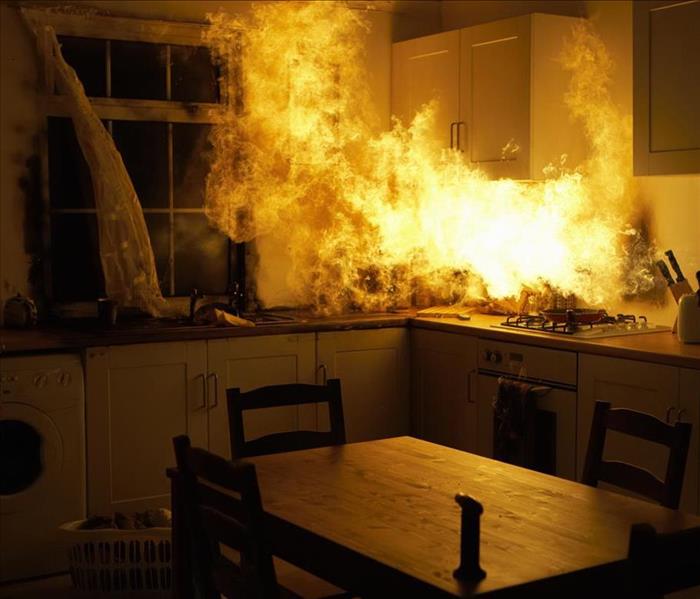 SERVPRO provides fast and quality fire damage restoration for your property. Our techs will have your property back to preloss condition ASAP.
SERVPRO provides fast and quality fire damage restoration for your property. Our techs will have your property back to preloss condition ASAP.
SERVPRO Provides Fire Restoration and Smoke Mitigation to Residents of Fayetteville
A fire in a home can begin so quickly, even after Fayetteville residents feel that they have taken all of the appropriate precautions. Many fires start in the kitchen. Residents may forget that something is cooking on the kitchen stove while attending to one of the kids or answering a phone call. They become distracted long enough for whatever is cooking to overflow and catch fire.
SERVPRO provides fire restoration services to the residents of Fayetteville and surrounding areas. Kitchen fires, although frequent, the actual damage they cause is often limited. The cupboards above the flames and beside the kitchen stove may be scorched. Everything in the immediate areas is covered in soot and perhaps fire retardant. Fortunately, the homeowner, in many cases, can stop the fire from spreading before it spreads to other areas of the kitchen.
Residents should never leave anything cooking on the stove unattended. Grease fires start easily and deliver enormous amounts of oily smoke residues that spread throughout the home following the hot air currents created by the fire and the HVAC system. Smoke residues and odors are often found in every room, penetrating clothing and fabrics and leaving smoke particles on surfaces.
SERVPRO can restore your home using controlled demolition approaches if needed to remove scorched kitchen cupboards and clean all surfaces and fabrics. We analyze the type of residue and apply the appropriate cleaning agent to clean oily residue from oil-based fires, the light, fluffy residue produced by hot fires, and odors that spread to the rest of the home. We wash and clean all surfaces.
SERVPRO fire technicians can be onsite within four hours of your call to provide immediate assistance. Our fire restoration services include:
- Fire and smoke damage restoration and cleanup
- House fire controlled demolition and clean up
- Fire damage repairs and smoke remediation
Call SERVPRO of East Onondaga County and nearby areas for fire restoration assistance. We can help 24/7. Call (315) 446-8776
Which Firm Should I Hire for Fire Restoration in Fayetteville?
3/6/2022 (Permalink)
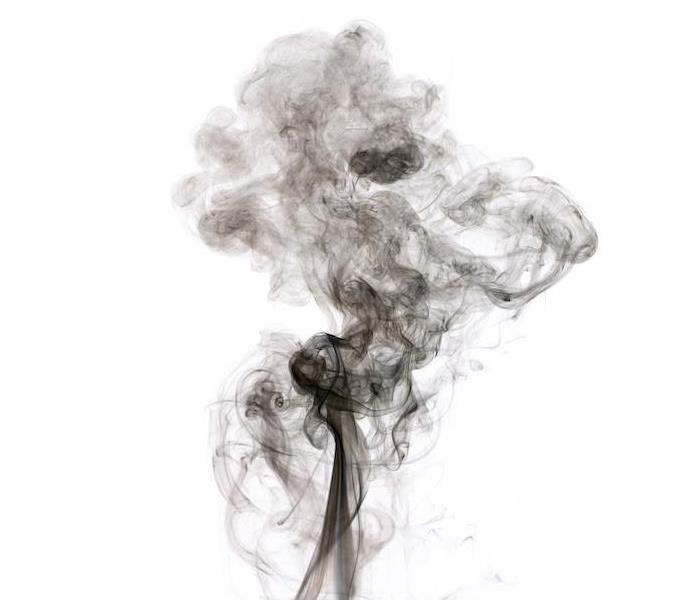 SERVPRO fire damage restoration specialists will have your home back to preloss condition in a timely manner. Call now!
SERVPRO fire damage restoration specialists will have your home back to preloss condition in a timely manner. Call now!
Fire Restoration in Fayetteville Calls for SERVPRO’s Services
According to data from the NFPA, a fire department in the United States responds to a fire every 24 seconds, and fires cause damages worth more than $25.5 billion every year. After a fire in your home, you might be wondering what to do or how long the repair process can take. Depending on the extent of the damage and the experience of the restoration firm you hire.
The restoration process may involve a variety of activities. Our SERVPRO technicians are competent in performing fire restoration in Fayetteville homes. SERVPRO will apply the principles and elements of cleaning to restore materials to their preloss state and reduce the expense of a fire claim. Our repair process may include the following activities:
Extraction of Water and Drying the Building
Our SERVPRO team can use portable extractors to remove the water that your sprinklers may have emitted upon activation by the fire or the water that firefighters used to extinguish the fire. We then dry everything the water has affected to prevent further damage like mold growth.
Demolition and Removing Debris
Fires usually cause the charring of building materials. We can perform controlled demolition of such materials and remove debris. Our SERVPRO team removes and discards the building materials and contents damaged beyond repair.
Removing Soot and Odors
Our SERVPRO team understands how smoke behaves during fires and can find and remove the heaviest deposits of smoke residues. We can remove odors using powered sprayers, which dispense chemicals at about 50 psi. We use them to spray applications directly onto the surfaces we are deodorizing, such as carpets, fabrics, and heavily charred structural components.
Reconstruction
We repair damaged structures to return your house to preloss condition.
SERVPRO of East Onondaga County takes pride in assisting property owners to bring things back to normal after fire damage. Contact us at (315) 446-8776. We’re Faster To Any Size Disaster.
SERVPRO Offers Fire and Smoke Damage Cleanup in Fayetteville
1/17/2022 (Permalink)
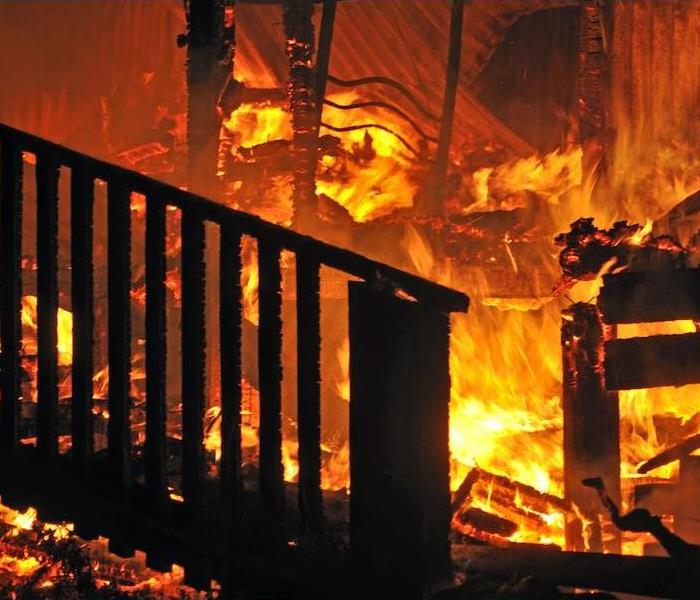 Fire damage restoration for your home is no DIY project. Call the professional team of SERVPRO for the immediate help you need.
Fire damage restoration for your home is no DIY project. Call the professional team of SERVPRO for the immediate help you need.
House Cleanup from Fire and Smoke Damage in Fayetteville – Call SERVPRO
Many homeowners delay calling for help to clean up their homes from fire and smoke damage after a fire in their Fayetteville homes. The combination of stress, being overwhelmed, and trying to complete the smoke cleanup themselves contributes to several days’ delay before seeking help. Even a delay of several days can contribute to additional water damage to fragile contents and mold growth. Mold spores can begin germinating in as little as 24 hours, adding further damage.
SERVPRO can help with fire and smoke damage cleanup and restoration in Fayetteville homes and businesses. SERVPRO can be onsite within four hours after your call and get to work as soon as the fire department gives the all-clear signal. Not only can we clean up after a fire, but our fast response also mitigates the additional damage caused by standing water and mold growth. Mold can cause health effects in many people. If you notice a strong, musty odor, mold is present.
Our team can help you recover from the fire, whether it is a small kitchen fire with lots of smoke residues throughout the house or a more serious fire requiring board-up services to cover windows, doors, and tarps covering holes in the roof caused by the fire. Your quick call to us and our fast response can mitigate the total damage.
Our process to manage and recover from the damage caused by fire includes:
- Inspection and damage assessment
- Immediate action to protect your home, e.g., board up services, avoid mold infestations
- Removal of water and chemicals
- Removal of smoke residues
- Total house cleanup and odor removal
- Smoke damage repair and restoration
Call SERVPRO of East Onondaga County in Fayetteville and nearby areas. We can help 24/7. Call (315) 446-8776.
Are There Cost-Cutting Solutions That Can Ease Fire Damage Restoration for Syracuse Homeowners?
10/13/2021 (Permalink)
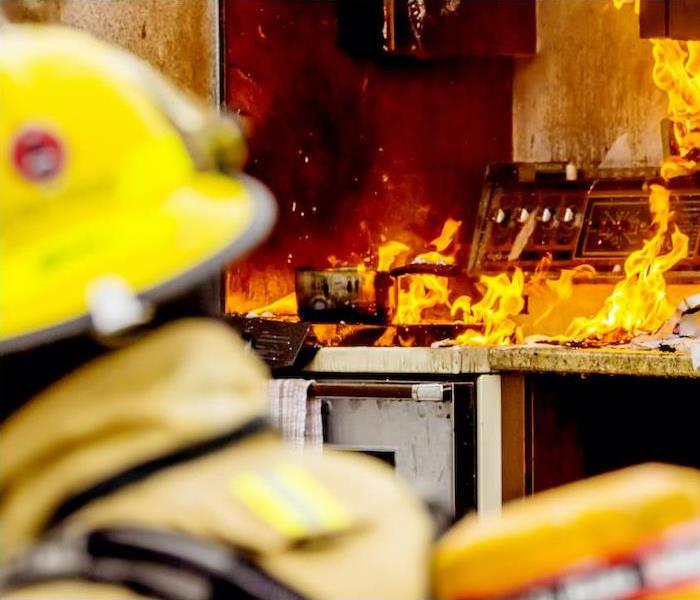 When a fire strikes and causes damage to your home, it's time to call SERVPRO. Fire damage restoration is a job for us.
When a fire strikes and causes damage to your home, it's time to call SERVPRO. Fire damage restoration is a job for us.
SERVPRO Uses Advanced Resources and Procedures to Help Salvage More Items After Fire
A large fire causes significant damage to structural elements and contents, leading to a high cost of fixing and replacing items. For a small fire, the damage left in your Syracuse home may be localized but still costly to fix, especially if you are paying out of pocket.
Since there are no other practical solutions to fire damage restoration for your Syracuse home, the next best alternative is to find cost-effective ways to achieve the desired goals. It is crucial to note that cutting costs is not the same as taking shortcuts which can have disastrous results later. SERVPRO provides the right solutions when you are in such a fix.
Cost-cutting is possible through:
Although fire consumes entire materials, it can also cause superficial damage such as charring or deep soiling. While such damage may not be aesthetically pleasing, the materials may still be structurally sound to be salvaged. Materials like structural frames and joists can have significant cost implications if you have to replace them.
Various actions can help salvage more materials, but restorative cleaning is the most cost-effective. Another alternative is resurfacing, especially for contents such as furniture. SERVPRO uses various approaches for restorative cleaning depending on the type, finish, and location of the material. Sanding can help eliminate charring for the unfinished wood materials. Our technicians may also prefer other alternatives such as soda or dry ice blasting, which effectively remove charring and greasy or deep layers of soot.
Blast cleaning also presents other advantages like:
- Deodorization of fire odors when using soda
- No mess when using dry ice pellets
- It does not wear off the materials being cleaned
SERVPRO of East Onondaga County helps deliver quality fire damage restoration by using advanced resources that also help reduce costs. Call us at (315) 446-8776. We’re Faster To Any Size Disaster.
Where Can Property Owners Get Fire Damage Repair in Syracuse?
9/10/2021 (Permalink)
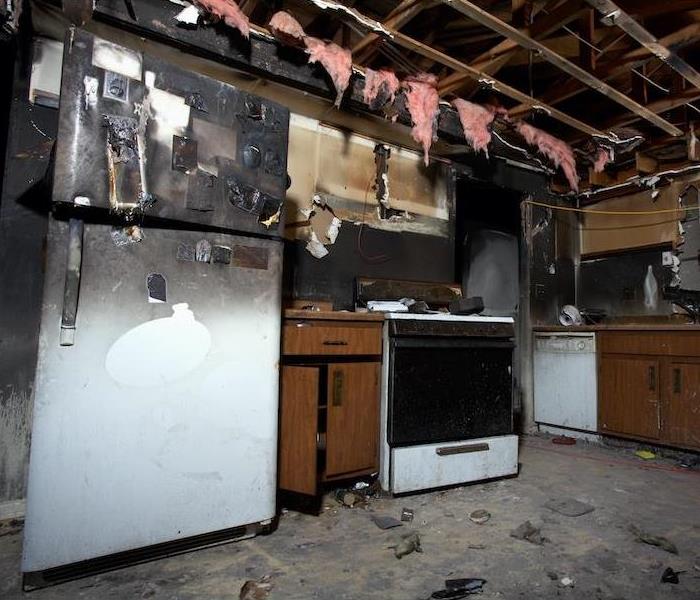 Call SERVPRO immediately after the fire truck drives away to ensure a speedy and efficient remediation process.
Call SERVPRO immediately after the fire truck drives away to ensure a speedy and efficient remediation process.
SERVPRO Offers Efficient Fire Damage Restoration Services in Syracuse
Fires contribute to billions of dollars of destruction every year. Even though it is impossible to truly prepare for the devastation of a home fire, you can minimize the losses by seeking help from reputable fire restorers. Regardless of the magnitude of fire damage, working quickly is essential to reduce smoke damage.
SERVPRO can begin fire damage restoration in your Syracuse home by examining the extent of the destruction, securing items that did not sustain damage and starting renovations. Our team can assess how deeply the fire penetrated the structure of your home and how much soot and smoke covered the surfaces.
When restoring homes after fire damage, the most common action is to loosen soils and then disperse them into a cleaning product. We then extract the soils with a cleaning product.
The suspension takes place when a soil dissolves in the cleaning products, our SERVPRO team can mix it with, or when soils emulsify in cleaning products, they do not mix with. The basic principle of using cleaning solutions to dissolve soils is “like dissolves like.” This principle is defined in the following definitions:
- Lipophobic –oil fearing
- Lipophilic – oil-loving
- Hydrophilic – water-loving
- Hydrophobic – water-fearing
Our SERVPRO team can remove oily soils in different ways. For instance, if they are light enough, we can emulsify them in water-based detergents. If the soils are too heavy for detergents to eliminate, we can use oil-based solvents to dissolve them.
Our team moves quickly to assist you in the time of need and uses the right technique and equipment to prevent secondary damage from taking place. The fire damage restoration process is a potentially hazardous undertaking, but our certified technicians have many years of expertise. We can take care of everything to ensure you are worry-free during the crisis.
If you have a fire or smoke damage incident on your property, call SERVPRO of East Onondaga County at (315) 446-8776 to help. Our team is available on a 24-hour basis. We’re Faster To Any Size Disaster.
Need Fire Restoration Done in Your Syracuse Home? Trust SERVPRO
7/8/2021 (Permalink)
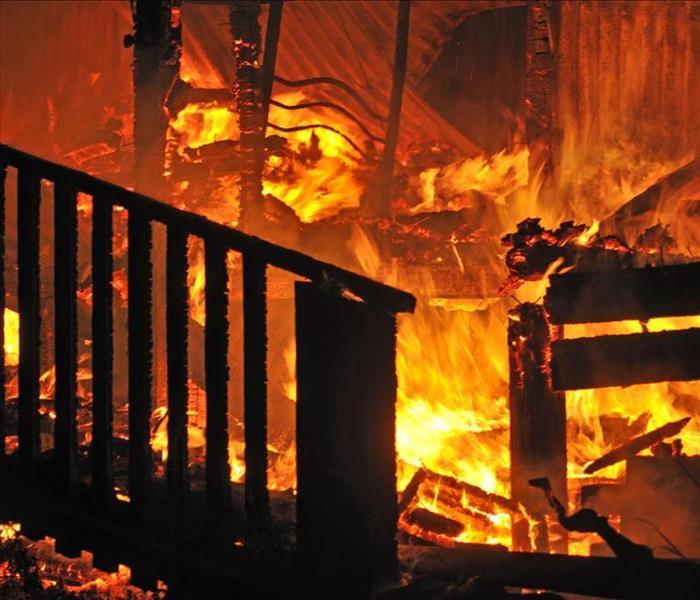 SERVPRO has skilled technicians for all phases of fire restoration. Especially smoke and soot residue. Call now!
SERVPRO has skilled technicians for all phases of fire restoration. Especially smoke and soot residue. Call now!
SERVPRO Offers Fire Restoration to Syracuse Homes after Any Size Disaster
A fire incident leaves different kinds of residue on your property, some easier to clean than others. Cleaning oily residues during fire restoration of your Syracuse home can be quite a challenge. SERVPRO techs use their knowledge of chemistry to deal with such residues.
SERVPRO techs eliminate the oily residue during fire restoration of your Syracuse home by two methods- emulsification or dissolution. If the oily residues are light, SERVPRO technicians often emulsify them into water-based detergents. However, for heavier residues, dissolution is often the only option. Oil-based solvents can dissolve even the heavier oily residue during house fire cleanup.
How Does SERVPRO Deal with Oily Residue during Fire Damage Restoration in Syracuse?
SERVPRO techs use the following methods for cleaning oily residue from your Syracuse home-
- Emulsification with a detergent- A detergent molecule has a water-loving (head) and an oil-loving (tail) part. The molecule's tail breaks the oily residues apart, and the head pulls them into the water forming a mixture called an emulsion within the cleaning solution. The cleaning solution can then be rinsed out along with the emulsified residue during the fire restoration.
- Dissolving with solvents- Non-aqueous solvents can dissolve heavy, oily residues. SERVPRO uses only OSHA and EPA-approved solvents during fire and smoke damage restoration. The solvents dissolve the residue and carry them away. SERVPRO techs are aware of the damage that solvents can cause to the surface and use all the proper precautions while using this method.
Call SERVPRO of East Onondaga County at (315) 446-8776 for a service you can trust.
Can SERVPRO Help Restore Contents After a Fire in Syracuse?
6/4/2021 (Permalink)
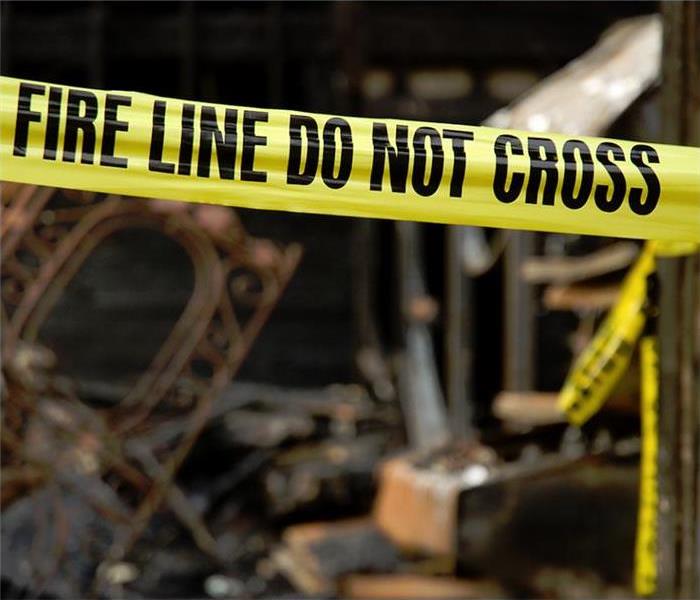 You can depend on our SERVPRO teams to cleanup and restore your property and personal belongings after a fire takes place.
You can depend on our SERVPRO teams to cleanup and restore your property and personal belongings after a fire takes place.
SERVPRO Provides Fire Restoration Services in Syracuse.
Many consumers are devastated after a fire in Syracuse. Their house is damaged from the fire, the smoke residue is on everything, and there is water everywhere from the efforts of the fire department to quell the blaze. Often our clients assume they must throw out all of their contents due to smoke residues and odors from the fire.
SERVPRO provides fire restoration services to consumers in Syracuse. One of the misconceptions that our team often hears is that everything is ruined and must be thrown out. Items, including structure, must be replaced if the fire damages it. Undamaged structural components and contents with smoke residues coating the surface can often be cleaned. It is often more expensive to replace an item than it is to clean it.
Structural surfaces can be cleaned and repainted, upholstered couches and chairs, pillows, and more can be cleaned and recovered. Wood surfaces can be wiped down and refinished. Hard surface items can also be wiped down, cleaned, and washed with soap and water. Restoration after a fire is much less expensive than replacing all of your contents.
SERVPRO offers the following as part of their fire restoration services:
- House fire clean up
- Smoke damage and odor removal
- Water & fire damage restoration
Call SERVPRO of East Onondaga County for fire restoration in Syracuse and surrounding areas. We can help 24/7. Call (315) 446-8776.
Fire Restoration Secrets from a Local Fayetteville Expert
5/3/2021 (Permalink)
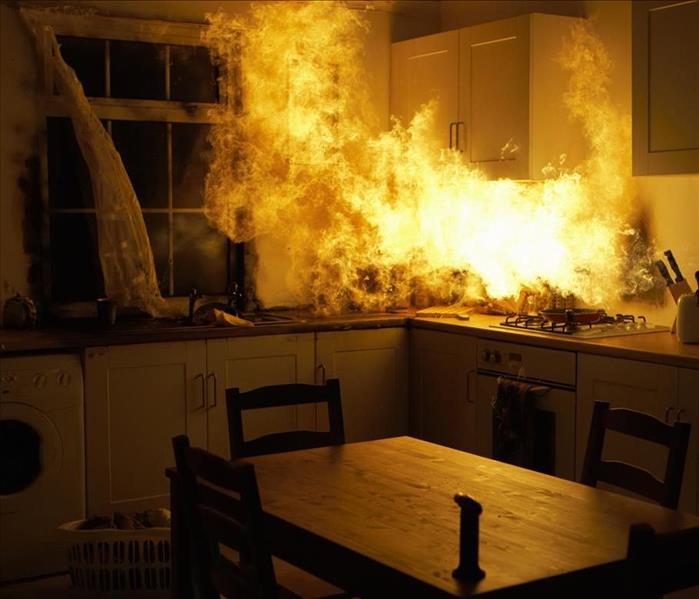 Fire and smoke remediation is no easy task. SERVPRO has the know-how and experience with all types of disasters.
Fire and smoke remediation is no easy task. SERVPRO has the know-how and experience with all types of disasters.
SERVPRO deals with fire damage in Fayetteville by combing efficient cleaning methods with scientific elements
Structure fires can be devastating. Immediate mitigation is necessary to protect the home from further damage. The entire process can be lengthy and requires thorough and diligent intervention. To reach a satisfactory result, we use scientific elements combined with cleaning elements and the right equipment.
Fire and Smoke Damage Restoration and Cleanup
We have skilled cleaning technicians who take a house fire cleanup seriously. When we arrive to fire damage in Fayetteville, we provide any emergency services needed. This could include board-up services, dealing with any safety issues, and setting up work areas. When addressing the removal of residues and soil from the contents and surfaces in your home, there are four processes that work together to achieve restoration. Each one is vital to the process:
- Agitation
- Chemical action
- Temperature
- Time
We do a scope of the home that allows us to determine the course of action needed. Each situation is unique, and the right type of agitation is important, as are the other three components. Our services include:
- Fire damage restoration
- Smoke remediation
- Cleaning fire damaged homes
- Returning to preloss condition
SERVPRO of East Onondaga County at (315) 446-8776 for professional fire damage services. We’re Faster To Any Size Disaster.
Why are Smoke Residues Difficult to Remove?
3/8/2021 (Permalink)
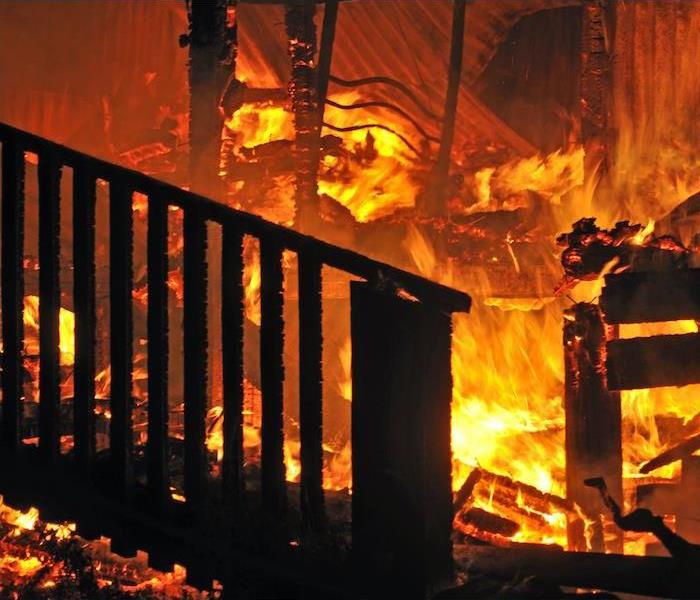 Smoke and soot residue are extremely difficult to remove. SERVPRO technicians are IICRC certified for the fire restoration service needed.
Smoke and soot residue are extremely difficult to remove. SERVPRO technicians are IICRC certified for the fire restoration service needed.
Smoke Can Come in Different Forms and Require Different Methods to Remove from your Syracuse Home.
Smoke residues are often multi-faceted. A single fire can release thousands of chemicals, odors, and toxins into the home environment. The resulting smoke depends on the type of materials that combust, which can differ significantly in residues' form and composition.
We offer expert fire damage restoration for Syracuse residents to help them return their homes to a preloss condition after a house fire. We pre-test meticulously to ensure that our cleaning approach matches the smoke residue types caused by a fire. Residues could be protein-based, dry soot, or wet smoke. Our system is tailored to the requirements of your home.
Expert Fire Damage Restoration Technicians at SERVPRO Can Help
- It is essential to reduce foot traffic in an area that has become damaged by fire to prevent causing permanent damages.
- Opening windows and allowing ventilation can help to release odors from the indoor environment.
- Always perform light-vacuuming of smoke residues before applying water or cleaning products to the area.
Soot and smoke residues can differ significantly in their composition and the cleaning method necessary to remove them. Contact SERVPRO of East Onondaga County for fire damage restoration at (315) 277-6767.
Syracuse Folks Can Learn to Draw
12/11/2020 (Permalink)
 SERVPRO is looking forward to the virtual drawing workshops!
SERVPRO is looking forward to the virtual drawing workshops!
This Beginner’s Intro to Drawing Workshop is Virtual - All Syracuse Residents Need to Do is Register
This online art class is the perfect chance for you to learn drawing basics. It is all done from the comfort of your home. All you do is register, and you can connect and join in some creative fun. It is a foundational drawing class that:
- Is a one-on-one experience from an expert art instructor
- Teaches essential drawing techniques
- It is relaxing and allows you to de-stress
- Learn about shade, cross-hatching, line, tone, and more
It is a ZOOM class, and your material list is available beforehand so you can prepare. It is a 90-minute session on December 14, 2020. It is a 1 ½ hour class, 1:00 PM – 2:30 PM. Classes are limited so register early. There are several price levels – you decide on what your pay. Call 212-932-8484 for more information.
SERVPRO Provides Fire Damage Removal in Syracuse
If your home experiences any type of fire, SERVPRO of East Onondaga County offers fire damage removal services that will have your home looking, “Like it never even happened.” That is the goal we always strive for and do our best to reach. Contact us at (315) 446-8776.
Syracuse Craft Beer Event
11/12/2020 (Permalink)
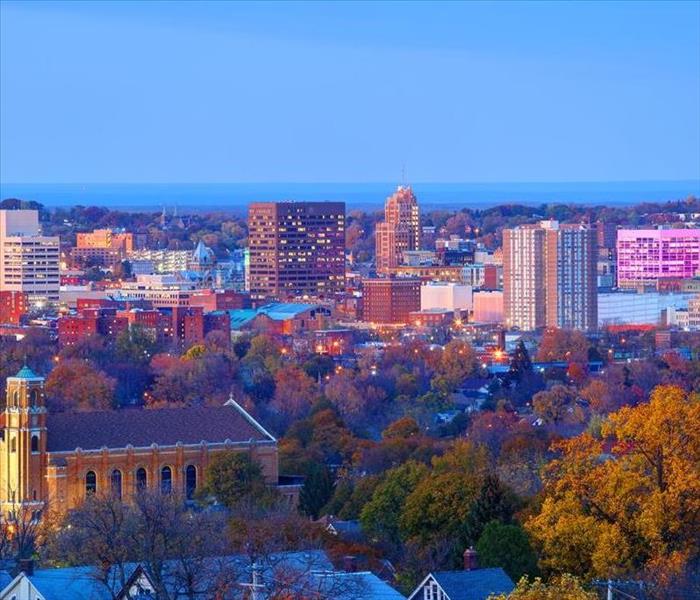 SERVPRO of East Onondaga County supports our local business especially when food is involved.
SERVPRO of East Onondaga County supports our local business especially when food is involved.
Syracuse Kasai Ramen Restaurant Hosting Dinner and Craft Beer Event
Kasai Ramen Restaurant is hosting a dinner and craft beer event on Nov 25th. They are featuring craft beer from Other Half Brewing Company and coupling with a five-course dinner. The restaurant is closing for the evening, and reservations are required. While social distancing rules will be followed, groups who wish to sit with each other should reserve in advance and purchase tickets.
This dinner-craft beer event features the following:
- Five-course dinner
- Featuring craft beers from the Other Half Brewing Company
- Craft beer pairing with each course
- Reservations required
- Groups welcome, social distancing rules apply
The restaurant expects the evening will sell out quickly. Other Half Brewing features over 864 beers, including IPA’s, Imperial IPA’s, Imperial Stout’s, and Lagers. Kasai Ramen serves excellent Japanese food and is located in the downtown area of Syracuse in Armory Square.
SERVPRO of East Onondaga County provides fire damage restoration services to Syracuse residential, business customers, and the surrounding area. Call (315) 446-8776. We are available 24/7 to help with all fire damage restoration needs.
Are There Significant Hazards My Family and I Might Encounter After a Fire Damages Our Syracuse Home?
9/9/2020 (Permalink)
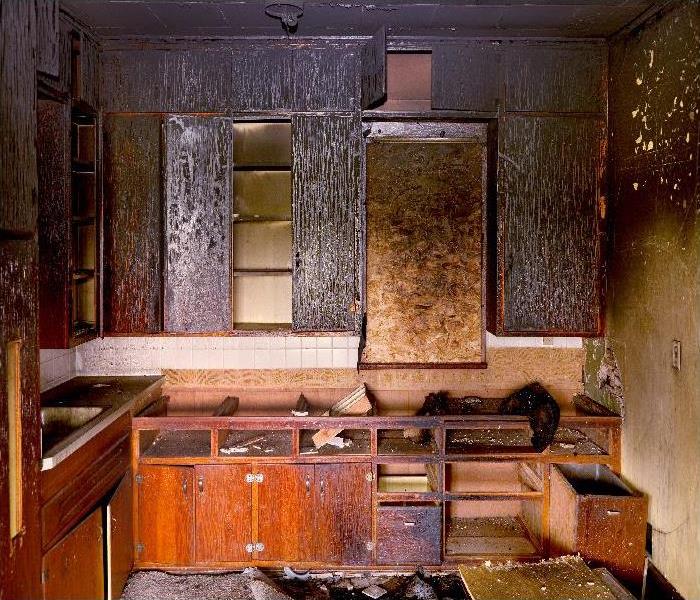 Safety is a priority as SERVPRO of East Onondaga County assesses, plans, and implements fire damage strategies in homes.
Safety is a priority as SERVPRO of East Onondaga County assesses, plans, and implements fire damage strategies in homes.
SERVPRO Always Assesses for Hazards and Implements Controls to Keep Syracuse Residents Safe During Fire Damage Mitigation and Remediation
A fire in your Syracuse home is not merely an inconvenience or a challenge to your cleaning expertise. The airborne and settled residues left after the combustion of a broad range of building materials and contents can pose health concerns. Heat and flames, plus the chemicals and water used to beat them back, can damage structures severely, weakening supports and exposing your family, you, and workers to many dangers.
What Kinds of Hazards Are Present After a Household Fire?
• Overhead hazards that might result in a collapse created by
• Partial or complete burn through
• Collection of firefighting water in ceilings and wall cavities
• Electric shock hazards due to pooled water and wet wires, cords, and outlets
• Slip, trip, and fall hazards because of wet or flooded floors and submerged debris
• Exposure to hazardous materials such as chemical, asbestos, or lead that, although perhaps previously encapsulated, was disturbed by the fire damage, water pressure, or mitigation and remediation efforts
• Airborne smoke residues, including toxic gasses released during combustion
How Do Professional Fire Damage Recovery Crews Control the Hazards?
SERVPRO evaluates the types and severity of fire damage hazards present in your home during our initial assessment. We approach each fire individually and adapt our controls and procedures during the project as necessary if new issues surface. To keep your family safe and our workers protected, we might:
• Shut off the power until electrical shock issues resolve
• Prioritize water removal
• Recommend a temporary evacuation of occupants, always working with your and your insurance company
• Contain the fire site and work areas with heavy plastic sheeting, adding air scrubbing technology to trap contaminants in HEPA filters before exhausting to the outside
• Employ personal protective equipment (PPE)
Use our master of the Institute of Inspection Cleaning and Restoration Certification (IICRC) training to match appropriate and efficient cleaning products, tools, and methodology to remove toxic and corrosive residues from the surfaces and contents of your home
Safety is a priority as SERVPRO of East Onondaga County assesses, plans, and implements fire damage strategies in homes. Call (315) 446-8776 before the firefighters wind up their duties so we can be onsite fast and ready to make it “Like it never even happened.”
For more about Syracuse click here.
Can I Remove Fire and Smoke Damage From Textiles in Syracuse?
8/16/2020 (Permalink)
 Fires can create odors in your home that are hard to get out. Call SERVPRO for fire damage remediation.
Fires can create odors in your home that are hard to get out. Call SERVPRO for fire damage remediation.
SERVPRO Technicians Routinely Remove Smoke and Fire Damage from Furnishings for Residents of Syracuse.
What qualifications should I look at for content restoration?
Restoring the contents of your Syracuse home requires careful planning and expert attention to detail. Our roster of technicians hold qualifications from the Institute of Inspection, Cleaning, and Restoration Certifications- a nationally recognized, independent awarding body. We act responsibly to identify different types of smoke and odor issues in furnishings before performing the necessary steps to return them to a preloss condition. Soft furnishings can be tricky to restore due to their diverse material composition. Using pH tests and pre-testing, we can ensure that your contents do not suffer from dye bleeding, shrinkage, or fiber wear during the restorative process.
How do I remove smoky odors from soft furnishings?
Soft furnishings tend to be porous in nature, which can lead them to absorb fire damage in your Syracuse home. Soots and soils may affect the surface level of materials, while high-pressure fires can lead to odor penetration beneath the surface of the fabric. SERVPRO can deploy air-filtration devices to remove potentially odor-causing soot particles from the area and apply liquid deodorants directly onto furnishings. Standard timings for odor dispersal can vary, but usually, we expect odors to depart at the two-week mark. Using a masking agent, SERVPRO technicians can reduce the impact of unpleasant odors until they disperse naturally and become no longer noticeable.
What equipment do I need to remove fire odors?
- Misters and ultra-low volume thermal foggers can help to penetrate fabrics or crevices with an odor-neutralizing solvent
- Odor pellets in problem locations can mask odors temporarily until they dissipate
- Air filtration using high-efficiency particulate air (HEPA) filters can restore indoor air quality and remove the odor-causing particles
If you need content restoration after a recent fire, contact SERVPRO of East Onondaga County at (315) 446-8776.
Click here for more information about Syracuse.
What Is The Easiest Way To Clean The Ceiling After Fire Damage In My Syracuse Apartment?
7/6/2020 (Permalink)
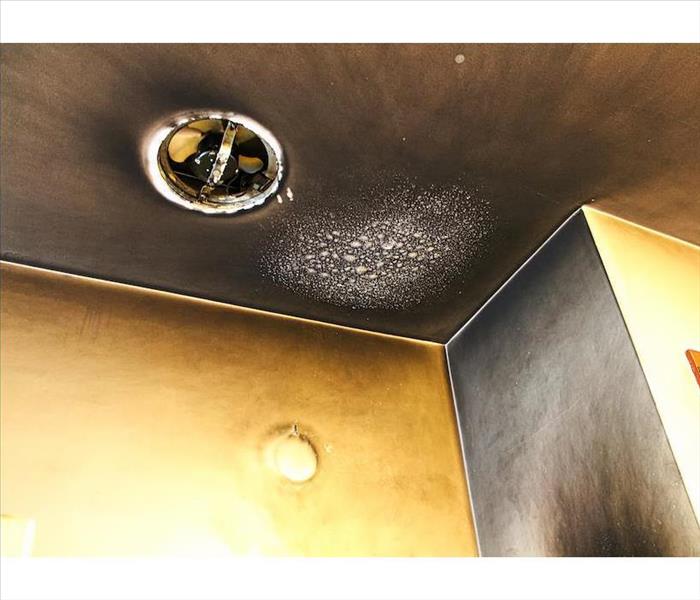 Syracuse your fire damage needs SERVPRO’s tools and reliability.
Syracuse your fire damage needs SERVPRO’s tools and reliability.
SERVPRO Provides Resources that Match the Cleaning Challenge Making It Easier to Restore Your Soiled Ceiling
Cleaning the ceiling can present many challenges, especially considering most smoke residues settle on its surface when there is a fire in your property. SERVPRO technicians have several resources that can help ease the cleaning of the ceiling in your Syracuse property.
What complicates ceiling cleaning after fire damage in Syracuse homes?
- The unusual position
- Delicate materials
- Ceiling fixtures
The location of the ceiling leads to awkward posture when cleaning, which can complicate the process or even lead to injuries. Our SERVPRO technicians in Syracuse use various accessories to simplify the process. For instance, we have different types of ladders, which help ensure proximity to the soiled areas. Alternatively, we can attach extension poles to regularly brush or cleaning sponge holders, for telescopic access to the ceiling when standing on the floor and at a less tiring angle.
Do ceiling materials affect the cleaning process?
Houses have various types of ceiling constructions, including:
Apart from the conventional ceiling, the other types add some level of difficulty to the cleaning process because of the design or the materials used to make them. For instance, if you have a suspended or drop ceiling, it is made of lightweight acoustic materials. Regular cleaning can damage it by over-wetting the panels. Our SERVPRO technicians use specialized cleaning methods such as Peroxide Active Cleaning, which eliminates overwetting.
We also overcome problems associated with different designs. For instance, the waffle-like coffered design or the multiple levels of the tray ceiling create crests and basins, which make it harder to remove residues. Our technicians have access to different resources, including chemical sponges and compressed air equipment, to help reach the residues conveniently.
With the right support, it is easier to remove soiling from a ceiling after fire damage. Call SERVPRO of East Onondaga County at (315) 446-8776 to help. We're Faster To Any Size Disaster.
See more about Syracuse
Spots to Find Hidden Fire Damage
11/27/2019 (Permalink)
 SERVPRO of East Onondaga County knows exactly what steps to follow a fire. Give us a call and we will guide you through the process.
SERVPRO of East Onondaga County knows exactly what steps to follow a fire. Give us a call and we will guide you through the process.
The Top Spots to Find Hidden Fire Damage in Your Home
Charred chairs and burnt bedroom sets are visible signs of fire damage. But some of the aftermath may remain hidden from view long after you think the cleanup is over. Take a look at the top spots for hidden fire damage and what you can do about them.
Air Ducts
Your home's HVAC system pulls air from the house into the heater or air conditioner and through the ducts. Whether you have the heat or AC on, your system forcibly pushes the recycled air around your home. If the fire damage extends into your ductwork or the furnace/air conditioner pulled smoke in during the blaze, the ventilation system could have soot in it.
What happens to leftover soot that's hidden in your home's ducts? When you turn the HVAC system on again it can carry the soot throughout your home. Along with coating your walls, floors, and furniture with a fresh layer of debris, soot can cause or aggravate respiratory issues — especially in young children or anyone with a breathing or cardiac condition.
If you suspect soot in your ducts, discuss this potential hidden problem with a qualified fire damage restoration professional. The expert can evaluate your home's damage and recommend a treatment plan to eliminate this issue.
Wall Spaces
Fire damage on the walls is obvious. But it can also penetrate the outermost layer and cause problems under the surface. An electrical fire that started inside of a wall can char wires, burn wooden studs, and seriously damage the interior structure of your home. Along with this type of damage, the fire fighters may have cut holes in the walls during the extinguishing process.
Damage inside of walls can pose a serious safety risk. Charred wires can lead to additional electrical issues (and possibly another fire) and burn-damaged studs or wood can cause structural problems.
If the extinguishing process results in water damage to the interior of the walls, the studs/frame and other components could rot or grow mold. You'll need a professional fire restoration service to inspect and repair the walls before you take the next step.
Attic Areas
Do you use your attic space? If you rarely to never go into your attic, you may forget to check the area for post-fire damage. While soot in the attic or smoke damage isn't plainly visible, you shouldn't ignore it.
Even though your attic is unused or storage-only space, it can still sustain serious damage — even if the flames don't come near the top floor area. Smoke from the fire will rise and eventually make its way to the attic. This traps potentially toxic gases in the area that, over time, can cause respiratory or heart disease. Whether you use this area or not, the health risks make restoration necessary.
The restoration contractor should inspect your attic from damage and create a treatment plan that includes a complete cleaning.
Carpet Padding
The carpets are singed and soaked. But again, the visible damage isn't the only problem you may have to deal with. It's possible the fire damaged the padding under carpet. If the fire itself didn't burn the padding, the extinguishing process may have left a damp mess behind. Moisture trapped under the carpet's surface can result in mold growth or cause problems, such as wood rot, with the subfloor.
A fire damage and restoration contractor can remove the top layer of flooring and check what's underneath. If the padding is damaged, moldy, or unusable, you'll need to remove and replace it. When the contractor removes the padding, they can clean the floor underneath and remove leftover debris, moisture, or mold.
Do you have fire damage? Contact SERVPRO of East Onondaga for more information.
Celebrate Summer Safely
7/25/2018 (Permalink)
Summer in Central New York is the time to enjoy the great outdoors! It is however, important to keep safety in mind. Please consider the following tips in order to enjoy being outdoors with friends and family in a safe way to keep you and your loved ones safe all summer long!
- When using charcoal grills, only use start fluids designed for BBQ grills. DO NOT add fluid after coals have been lit.
- When using a gas grill, ensure the hose connection is tight. You want to avoid having a gas leak which may cause a fire to ignite outside of the grilling area. Applying soapy water to the hose will easily help identify any leaks.
- When camping, always use a flame-retardant tent and set up any camp far away from the campfire.
- Always build a campfire downwind from the tent area.
- Clear any vegetation and dig a pit before building your fire.
- Extinguish the fire before leaving the site or going to sleep.
- Store liquid fire starters away from the tent area and only use dry kindling to freshen a campfire.
Steps to Take After a Fire
7/2/2018 (Permalink)
Fires can be understandably overwhelming. Here are the first steps to take after a fire.
- Make sure the local fire department has given the okay to go inside the residence.
- Call your insurance company so they can start a claim and initiate paperwork. If you are a tenant contact your landlord.
- Call loved ones to let them know you are okay and inform anyone who wasn’t home what happened.
- Secure the residence to prevent theft by locking doors and covering windows or holes. If you need help, give us a call! We offer board up services to secure the property.
- Get a copy of the fire report by contacting your local fire department.
- If the residence is uninhabitable, contact a friend or relative in the area to see if you can stay with them or the American Red Cross for assistance.
- Notify your employer, friends, family, post office, children’s schools, delivery services such as newspapers, utilities, telecom services and the police all of your current move.
- Consider the cleanup requirements. Does all of your contents need to be cleaned? Does every rooms need to be cleaned? Was the affected area contained to certain rooms in the home?
- Talk to your insurance company about what your policy covers before having a cleanup and restoration company come on site.
- If counseling is needed, especially for small children, don’t be afraid to seek help.
Grilling Safety Tips
6/18/2018 (Permalink)
Summer is finally here and we all know what that means…. grilling time! Who doesn’t love a nice steak or veggies cooked on the grill while basking in the sun? It’s easy to forget that while grills are a great way to cook food in the summer, there are some hazards that go along with them. Here are some tips to remember for safe grilling.
- Use your grill outside and away from low roofs. This will not only prevent toxins from lingering in your home but will also prevent potential fires.
- Place the grill on a flat surface away from anything that may catch fire such as trees, shrubs, fences and hedges.
- Do not grill with loose clothing or dangling bits that can catch fire or are flammable.
- Have a fire extinguisher on hand and know how to use it. It’s also a good idea to have a small squirt bottle fill with cold water nearby to douse any minor flames.
- Keep children and pets away from the grilling area.
- Do not leave the grill unattended.
- Smoke and char contain chemicals that have been linked to health problems including cancer. Do not stand over the barbeque and inhale the smoke if at all possible. While char stripes may look good on your steak, char has been known to contain cancer causing toxins. Cook the meat to your liking and then remove it from the grill before too much char builds up.
- Bristles from wire brushes have been known to get stuck on the grill and then people’s food which enters the digestive system causing abdominal pain. Use a different kind of nylon or plastic brush to clean your grill to ensure no one digests these harmful bristles. If you already use a wire cleaning brush or plan to continue using one, just make sure you check your grill before cooking to clean any bristles off.
Follow these simple safety tips for a fun and safe grilling season!
Fireworks Safety
6/18/2018 (Permalink)
When most people think of summer, particularly the Fourth of July, fireworks come to mind. While it’s best to just let the pros take care of bright light displays, we realize that many people often ignite their own fireworks. Here are some tips on how to stay safe while lighting off your own fireworks.
- Never let young children handle fireworks.
- Ensure older children are supervised closely by an adult when using sparklers and remind them to keep the sparkler away from their body, clothing, hair and others.
- Store fireworks in a cool damp place until usage.
- Do not use or buy illegal fireworks. These typically have names such as M-80, M-100, quarter pounder or blockbuster. Illegal fireworks account for the majority of accidents cause by fireworks in the first place.
- Never try to make your own fireworks.
- Read the labels on all fireworks before igniting so you are aware of safety precautions and performance of each.
- Do not carry fireworks in your hand or pocket as they could ignite due to friction.
- Never light fireworks in a metal or glass container.
- Wear protective goggles when lighting fireworks off or if you happen to be near the ignite site.
- Always have a bucket of water nearby and a hose just in case.
- Never reignite a dud. Wait twenty minutes and if it still hasn’t gone off, place it in a bucket full of water away from people, structures and flammables for several hours.
- Never point a firework at someone, even in jest.
- Ignite fireworks outdoors in an open space away from people, homes, brush and other flammable substances.
- Only light one firework at a time.
- Soak all fireworks in a bucket of water for several hours before throwing them away.
- Do not pick up firework debris until several hours after the display as many of pieces may still be hot and can cause burns.
Please keep these Safety tips in mind when setting off fireworks this season!
Types of Fire Damage
6/1/2018 (Permalink)
Not all fires are the same. They are caused by and thrive on different elements so, as a result, classes of fires came about. Classifications of fires are needed to determine how to extinguish them properly. You wouldn’t want to re-ignite or spread a fire by using the wrong type of extinguisher. Determining what class a fire is, is detrimental to using the proper equipment to extinguish it.
Class A involve ordinary combustibles such as paper, wood, plastics, cloth, trash and items that leave ash as a residue.
Class B fires are fueled by flammable or combustible liquids such as gasoline, propane, butane, paint and oil. Class B does not however include cooking oils or grease.
Class C are energized electrical fires which involve engines, transformers and appliances.
Class D fires are caused by combustible metals such as potassium, magnesium, titanium, sodium, and aluminum.
Class K fires are fueled by cooking oils, animal fat or grease. These normally occur in commercial kitchens.
In one of our previous blogs, you can read about the different types of extinguishers and which ones should be used for each specific class of fire.
Dryer Maintenance
4/16/2018 (Permalink)
There are many things in the home that should be checked on a regular basis to stop possible damage to your home. Have you ever checked your dryer vent to see if it is plugged? A plugged dryer vent could stop your dryer from running sufficiently and could possibly cause a house fire.
Dryers that are centrally located in the home are the most at risk of plugging up because the duct system is longer than ones that are located on an exterior wall of the home and vent directly to the outside.
Reasons for a dryer plugging up are:
- Excess lint build up. Over time, lint builds up in the dryer ducting and can cause a blockage. It’s important to unhook the ducting 1-2 times a year and thoroughly clean it out from any lint or debris that may be blocking it. If possible, you can simply use a vacuum and vacuum out the dryer ducting. However, if your dryer ducting is longer and is ducted through different areas you may need to have someone do this for you. Call our office and we’ll schedule an appointment to have your dryer ducts out for you! We have special equipment that can thoroughly clean all of the dryer ducts.
- Nesting pets. The dryer ducts can be a warm place for animals to borrow into. Animals may bring debris into the ducts to crate a home for themselves causing possibilities for fire damage. Checking that the ducts are not plugged will help ensure that this does not occur.
- Stuck exhaust hood flappers. From time to time, check the exhaust hood flap to ensure that it is not stuck.
Spring Fire Safety Tips
3/16/2018 (Permalink)
Spring Forward Safety Tips!
We recently moved our clocks forward an hour to get ready for spring and prepare for the warmer weather coming our way soon. This is the time of year we begin spring cleaning our homes, preparing to spend more time outside, doing repairs and refreshing our lives. This is also a great time to check things in our homes like smoke alarms, carbon monoxide detectors and fire extinguishers.
SMOKE ALARMS
According to the National Fire Protection Association Association, 3 out of every 5 home fire deaths result from fires in homes with no smoke alarms. Now is a great time to test your smoke alarm to make sure it still works and replace batteries if necessary. If your smoke detector begins making a chirping noise, that is a sign that you need to immediately replace it. The NFPA recommends having a smoke alarm in every bedroom and on each level of your home.
CARBON MONOXIDE DETECTORS
Carbon monoxide (CO) is an invisible, odorless gas that can have harmful affects on people and animals. CO alarms should be installed outside in a central location outside of bedrooms and on each levels of the home. Some smoke detectors are also CO detectors. Use the same rules for CO detectors as you use for smoke alarms, check that they are working and check their batteries.
FAMILY EMERGENCY PLAN
Now is also a great time to review your family emergency plan with the people who stay in your home. It’s good to remind everyone of the plan and make sure everyone is on board. Should any changes be necessary to the plan, now is a good time to discuss that as well.
EMERGENCY KIT
Because we never know when disaster may strike, it’s important to have an emergency kit in your home and car. During your spring cleaning, check to see if any supplies need to be restocked or replaced in your emergency kits.
Facts About Smoke and Soot
3/1/2018 (Permalink)
Smoke and Soot Damage Can Cause a Pervasive Odor in Your Home.
Smoke and soot is very invasive and can penetrate various cavities within your home, causing hidden damage and odor. Our smoke damage expertise and experience allows us to inspect and accurately assess the extent of the damage to develop a comprehensive plan of action.
Smoke and soot facts:
* Hot smoke migrates to cooler areas and upper levels of a structure.
* Smoke flows around plumbing systems, seeping through the holes used by pipes to go from floor to floor.
* The type of smoke may greatly affect the restoration process.
Different Types of Smoke
There are two different types of smoke–wet and dry. As a result, there are different types of soot residue after a fire. Before restoration begins, we will test the soot to determine which type of smoke damage occurred. The cleaning procedures will then be based on the information identified during pretesting. Here is some additional information:
Wet Smoke – Plastic and Rubber
* Low heat, smoldering, pungent odor, sticky, smeary. Smoke webs are more difficult to clean.
Dry Smoke – Paper and Wood
* Fast burning, high temperatures, heat rises therefore smoke rises.
Protein Fire Residue – Produced by evaporation of material rather than from a fire
* Virtually invisible, discolors paints and varnishes, extreme pungent odor.
Our Fire Damage Restoration Services
Since each smoke and fire damage situation is a little different, each one requires a unique solution tailored for the specific conditions. We have the equipment, expertise, and experience to restore your fire and smoke damage. We will also treat your family with empathy and respect and your property with care.
Have Questions about Fire, Smoke, or Soot Damage??
Call Us Today – (315-457-3432)
Your Belongings After a Fire
2/19/2018 (Permalink)
When you experience a fire in your home, the fire damage affects not only the structure of your house, but also your belongings. SERVPRO is here to help! SERVPRO understands your furniture, clothing, keepsakes and belongings are very important to you. We know that some of these items are essential to making a house a home.
After experiencing a fire, it is common to feel overwhelmed. We are here to make this awful situation better for you. SERVPRO offers a Contents Claim Inventory Service, this provides a detailed and accurate list of your belongings. Our technicians go room to room documenting your contents by creating a list and taking digital photos. This way, the lists and photos can easily be sent to you and your insurance company. Once the list is created, a preload value of contents can be created. This will help produce a detailed and accurate report to settle your insurance claim quickly and accurately.
When necessary, SERVPRO can complete move-outs and pack-outs for you! If your home requires extensive restoration or cleaning due to the damage from the fire, we can organize an efficient move-out of contents from the affected area. Move-outs allow for a quicker rebuild/remodeling and protects contents from damage during the remodel. While the rebuild/remodeling happens, your items can be inventoried and cleaned at our office. Should the remodeling take extra time, we can store your items until the project is finished.
When the restoration project is completed, we will move everything back into your home and help you get settled.
Different Types of Smoke
11/2/2017 (Permalink)
Did you know that there are actually different types of smoke which can cause damage to your home and contents during a fire? When we access the damage caused by fire and smoke, we take into account the cause of the fire and the type of smoke damage. This way, we make sure that the proper cleaning supplies and techniques are used to clean the fire and smoke damage. Just like there are different methods you would use to get a stain out of your favorite shirt based on what kind of stain it is, we use different cleaning methods based on what kind of smoke caused the damage to your home and contents.
Wet Smoke is occurs when plastic and rubber burn. The fire most likely burned at a lower temperature than other types of fire and leaves a very strong, pungent odor. Wet smoke leaves a sticky residue. There are often smoke webs in the corners that can be difficult to clean.
Dry Smoke often occurs when paper and wood burn. These materials burn quickly and at very high temperatures. The smoke rises and can cause a lot of damage to the ceilings and even higher levels that were not directly affected by the fire itself.
Protein Fire Residue occurs from evaporation of material rather than an actual fire. This type of smoke can be hard to see, but causes a discoloration or paints and varnishes. Protein fire residue has a very strong odor which can be hard to get rid of.
Fuel Oil Soot often happens when a furnace has a “puff back”. This is caused when a furnace malfunctions and the HVAC system throws smoke throughout the home by way of the duct system. The furnace will need to be replaced or repaired before cleaning can begin to ensure that the problem does not occur again. A duct cleaning will also need to be performed so that left over soot in the ducts doesn’t get thrown around the affected areas again.
No need to worry about figuring out what type of smoke damage you have, our SERVPRO team will assess the type of smoke that has affected your property and decide what cleaning methods will be the best.
Maintaining Your Electric System
8/5/2017 (Permalink)
Each year many fires break out in homes and commercial buildings due to a failure in the electrical system. While not every electrical fire can be prevented, there are precautions which can be taken to lessen this risk.
Electrical fires can be caused by:
- Broken wires
- Wire insulation drying out
- Loose switches or receptacles
- Overheating caused by dirt an oil
Allstate Insurance company recommends that you have your electrical system checked by a licensed electrician every four years. Having an electrician assess the electrical system will ensure that your home or building is up to code and that any issues are addressed. If you see an appliance that has a broken wire, fix the wire immediately or replace the appliance. While replacement may be costly, it will reduce the chance of a fire. Tighten any switch or plug that appears loose. It is important that switches and plugs are secure. Remember not to overload outlets. If necessary use an electrical adapter with surge protection.
Studies show that faulty wiring is the number 1 cause of electrical fires. Watch for warning signs of faulty wiring:
- Flickering lights
- Breakers that always trip
- Fuses that blow
- A burning smell when appliances are plugged in
- Outlets/switches that spark when plugging in or unplugging an appliance
- Discoloration around outlets
Remember that prevention is the key to safety! Electrical fires spread quickly and can be life threatening and costly. Call your local electrician if you have specific questions or concerns about something in a home of building that you own. Working with electrical work can be very dangerous and it is important to hire an experienced technician to complete any necessary electrical work.
Fireworks Safety
5/26/2017 (Permalink)
Who doesn’t love fireworks in the summer time? While it is so much fun to enjoy fireworks light up the night sky, it is important to be safe! Please read these safety tips to ensure you have a fun, safe night!
Safety Tips:
-Check to make sure that fireworks are legal in your area before buying and using them.
-Read instructions for proper use of the fireworks thoroughly before use.
-Do not allow young children to play with fireworks unsupervised.
-Do not hover directly over the fireworks at any time when lighting the fuse.
-Do not attempt to re-light fireworks that didn’t ignite on the first try.
-Keep water easily accessible in case of a fire or other accident.
-Do not point fireworks toward another person.
-Do not consume alcohol when using fireworks.
Facts about Fireworks:
-Sparklers are 15X’s hotter than boiling water.
- Approximately 200 people go to the ER everyday from June 17th-July17th with injuries related to fireworks.
-People ages 25-44 make up 40% of injuries reported from fireworks.
- There are 2X’s as many fires on July 4th than reported any other day of the year.
Have fun, but remember to be safe!
Electrical Safety
5/16/2017 (Permalink)
Did you know that May is Electrical Safety Month? We would like to give you some electrical safety tips which could help you avoid fire in your home! Between 2007and 2011, 48% of home fires caused by electrical failures were because of distribution errors. This means that the electric usage in the home was at an unsafe level, causing fires to start due to overloading the system.
Items in your home that you should check the wattage of to ensure they are not being overloaded are:
-Bulb wattage- ensure that you are using the correct wattage in lamps and fixtures
- Cords- replace any frayed, cracked or damaged cords as soon as possible
-Extension Cords and Power Strips- Do not over load! Only plug in one high-wattage appliance per power strip
-Outlets- if the outlet feels warm, this is a signal that the wiring is unsafe and should be checked out by a professional
-Appliances- Unplug any unused appliance
-Fuse Box-Make sure the fuses are the correct size for the circuit
-Circuit Breaker Box- Occasionally turn the circuit breakers off and on to make ensure they are in good working condition.
Should you have any questions, don’t hesitate to contact an electrician to check out the electrical situation in your home. They are happy to come out and inspect your home for any improvements that can be made. It is important to make sure your house’s electrical system is up to code for the safety of you and your family.
Thanksgiving Safety
3/27/2017 (Permalink)
Did you know that Thanksgiving is the leading day of the year for home fires involving cooking equipment? Follow these tips to ensure that you can enjoy the holidays with family and friends eating delicious food and thinking about what you’re most thankful for!
- Pay attention! Don’t get distracted by having too much going on at once. Keep a close eye on everything you have cooking and never leave the kitchen unattended.
- Don’t cook while intoxicated. Although the holidays are a time to relax and let loose, make sure you do not have too much to drink while cooking/baking.
- Keep a lid handy to smother the flames. Fires can start very quickly. Make sure you’re prepared any event that may erupt.
- Do NOT pour water on a grease fire. Water may be your first thought to put on any fire, but for a grease fire it will not help. If possible, you can cover the grease fire to attempt to remove oxygen from the flame. Pouring baking soda on the flames will also help deprive the flames of oxygen and put out the fire.
- Consider purchasing a smart stove which will extinguish fires or turn off automatically by itself. It is amazing what technology has been developed! There are many different types of smart stoves which have many different functions. Some of which you can connect remotely to your cooktop and oven to control the settings remotely.
- Keep flammable items away from the stove top. This may seem obvious, but when you are trying to make 3 things at once, it can be easy to set something down on or near the cooktop that shouldn’t be there.
- If you do have any type of fire while cooking, make sure to call your local fire department. After a material has been on fire the objects stay very hot for a long time. Sometimes the fire can restart. The fire department can ensure that the items are cool enough that the fire won’t restart.
We hope you remember these tips all year long! Hope you have a safe and happy holiday with your friends and family!
Most Reported Causes of Fire
3/14/2017 (Permalink)
The National Fire Protection Association lists the frequency of reported fires by causes on their website. The following are the most frequently reported fires:
Appliances and Consumer Electronics- This list includes but is not limited to cooking equipment, heating equipment, washers and dryers, air conditioners and fans.
Child Play- Approximately 44,500 fires are started each year by children playing with matches, lighters and other fire starting materials not even knowing the dangers this type of play can cause.
Candles- Placing candles in places where they can easily catch fire and leaving them unattended.
Chemicals and Gases- Storing gases improperly and spontaneous combustion.
Holidays- Christmas trees, holiday lights and decorations.
Weather and Outside Elements- Such as lightening, brush, grass and trees.
Smoking Materials- Cigarettes and other smoking supplies.
It is important to take notice that many of the commonly reported causes of fires are preventable to some amount. It is important to take caution when utilizing anything that could have potential to start a fire. Some of the actions seem harmless, such as going to take a shower while baking in the oven. However, fires often start when we least expect it. It is better to be safe than sorry. For more information about fire visit: http://www.nfpa.org/news-and-research/fire-statistics-and-reports/fire-statistics
Removing Odors From Smoke Damage
2/28/2017 (Permalink)
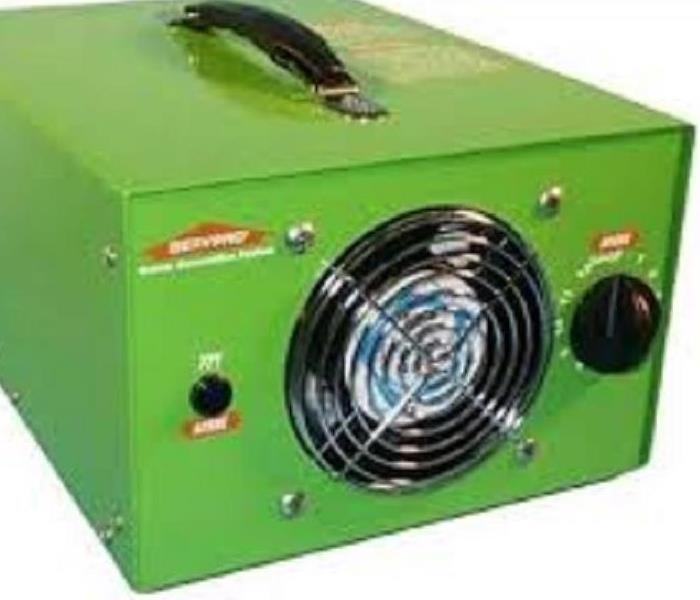 Ozone Generator
Ozone Generator
After a fire, you may have a strong residual smoke odor even after a full cleaning has been performed. Smoke odors can penetrate materials and get in hard to reach crevasses. In order to completely remove smoke odor we have an Ozone Generator that is used to oxidize odor. In addition to smoke odor, this Ozone Generator can be used to eliminate odors from pets, mildew, organic pollutants and more without the use of chemicals.
This Ozone Generator does not leave any residual film. All people and animals should vacate the area while the ozone machine is being used in. We seal the room to prevent dissipation to areas that do not need deodorization.
We recommend customers having their contents and structure ozoned following fire restoration to ensure all odors are removed.
Recently a fire broke out at a local business, Salt City Billiards, during the very early morning. (http://cnycentral.com/news/local/early-morning-fire-at-salt-city-billiards-in-north-syracuse) Many of the customers who play pool at this location had their pool cues and cases stored on-site at Salt City Billiards. The pool cues and cases can be very expensive and absorbed a good amount of smoke odor. We told the customers that they could bring their pool cues and cases to our office and we would put them in our ozone room free of charge to remove the odor.
How to Use a Fire Extinguisher
1/18/2017 (Permalink)
Do you have a fire extinguisher in your home or business? Did you know that many insurance companies offer a discount for having a fire extinguisher in your home? For a mere $20-$50 you could save money on your homeowners insurance and have a life and property saving tool in your home.
If you have a fire extinguisher in your home, it is important to understand how to properly use it. After reading this article read the instructions on your extinguisher and become familiar with where everything is located on it. Make sure to share the information with everyone in your home so they too can be prepared.
The National Fire Protection Association recommends remembering the word PASS in order to properly operate your extinguisher.
Pull the pin. Hold the nozzle pointing away from you and release the locking mechanism.
Aim low. Point the extinguisher at the base of the fire.
Squeeze the level slowly and evenly.
Sweep the nozzle from side-to-side.
Make sure you store your fire extinguisher in a safe and easily assessable area. Check the date on your extinguisher and make certain it is not expired. Put in your calendar to check the expiration date yearly.
Before purchasing a fire extinguisher, visit NFPA.org to understand which type of extinguisher is right for your property.
What's the First Step After a Fire?
8/4/2016 (Permalink)
Fires can be understandably overwhelming. Here are the first steps to take after a fire.
- Ask the firefighters or proper authorities on the scene if it is safe to go inside the residence.
- Call your insurance company so they can start a claim and initiate paperwork. If you are a tenant contact your landlord.
- Call loved ones to let them know you are okay and inform anyone who wasn’t home what happened.
- Secure the residence to prevent theft by locking doors and covering windows or holes. If you need help, there are numerous companies that offer these services.
- Get a copy of the fire report by contacting your local fire department.
- If the residence is uninhabitable, contact a friend or relative in the area to see if you can stay with them or the American Red Cross for assistance.
- Notify your employer, friends, family, post office, children’s schools, delivery services such as newspapers, utilities, telecom services and the police all of your current move.
- Consider the cleanup requirements. Is this a small fire or a large project you will have to hire a company for?
- Talk to your insurance company about what your policy covers before having a cleanup and restoration company come on site.
- If counseling is needed, especially for small children, don’t be afraid to seek help.
Firework Safety
6/29/2016 (Permalink)
When most people think of summer, particularly the Fourth of July, fireworks come to mind. While it’s best to just let the pros take care of bright light displays, we realize that many people often ignite their own fireworks. Here are some tips on how to stay safe while lighting off your own fireworks.
- Never let young children handle fireworks.
- Ensure older children are supervised closely by an adult when using sparklers and remind them to keep the sparkler away from their body, clothing, hair and others.
- Store fireworks in a cool damp place until usage.
- Do not use or buy illegal fireworks. These typically have names such as M-80, M-100, quarter pounder or blockbuster. Illegal fireworks account for the majority of accidents cause by fireworks in the first place.
- Never try to make your own fireworks.
- Read the labels on all fireworks before igniting so you are aware of safety precautions and performance of each.
- Do not carry fireworks in your hand or pocket as they could ignite due to friction.
- Never light fireworks in a metal or glass container.
- Wear protective goggles when lighting fireworks off or if you happen to be near the ignite site.
- Always have a bucket of water nearby and a hose just in case.
- Never reignite a dud. Wait twenty minutes and if it still hasn’t gone off, place it in a bucket full of water away from people, structures and flammables for several hours.
- Never point a firework at someone, even in jest.
- Ignite fireworks outdoors in an open space away from people, homes, brush and other flammable substances.
- Only light one firework at a time.
- Soak all fireworks in a bucket of water for several hours before throwing them away.
- Do not pick up firework debris until several hours after the display as many of pieces may still be hot and can cause burns.
Fireworks are illegal in many states so make sure you check your state and local laws before lighting up the skies. Happy Fourth of July!
Grilling Safety Tips
5/23/2016 (Permalink)
 Grill.
Grill.
Summer is finally here and we all know what that means…. grilling time! Who doesn’t love a nice steak or veggies cooked on the grill while basking in the sun? It’s easy to forget that while grills are a great way to cook food in the summer, there are some hazards that go along with them. Here are some tips to remember for safe grilling!
- Use your grill outside and away from low roofs. This will not only prevent toxins from lingering in your home but will also prevent potential fires.
- Place the grill on a flat surface away from anything that may catch fire such as trees, shrubs, fences and hedges.
- Do not grill with loose clothing or dangling bits that can catch fire or are flammable.
- Have a fire extinguisher on hand and know how to use it. It’s also a good idea to have a small squirt bottle fill with cold water nearby to douse any minor flames.
- Keep children and pets away from the grilling area.
- Do not leave the grill unattended.
- Smoke and char contain chemicals that have been linked to health problems including cancer. Do not stand over the barbeque and inhale the smoke if at all possible. While char stripes may look good on your steak, char has been known to contain cancer causing toxins. Cook the meat to your liking and then remove it from the grill before too much char builds up.
- Bristles from wire brushes have been known to get stuck on the grill and then people’s food which enters the digestive system causing abdominal pain. Use a different kind of nylon or plastic brush to clean your grill to ensure no one digests these harmful bristles. If you already use a wire cleaning brush or plan to continue using one, just make sure you check your grill before cooking to clean any bristles off.
Follow these simple safety tips for a fun and safe grilling season!
The Most Devastating Fire in U.S. History
5/10/2016 (Permalink)
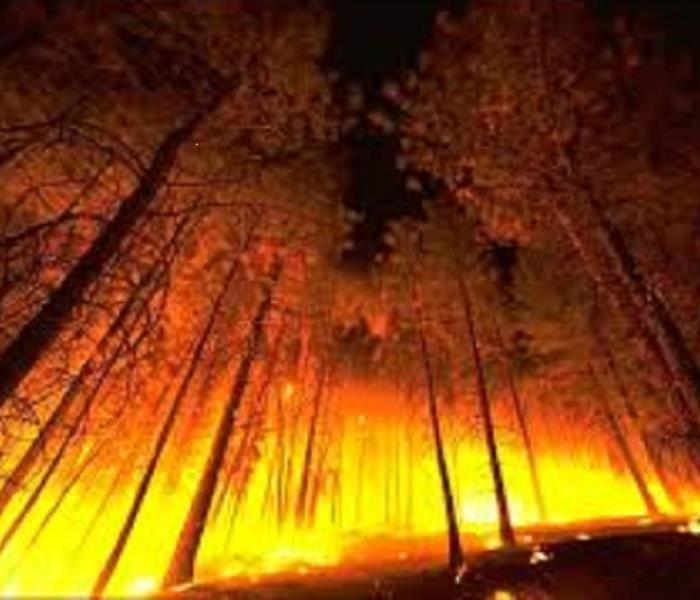 Forest fire.
Forest fire.
The Great Peshtigo Fire
The Peshtigo fire was the most devastating fire in U.S. History to date killing more than 1,500 people and decimating 1.2 million acres in Wisconsin and upper Michigan. Little is known about the tragic fire of Peshtigo on October 8th of 1871 for two reasons: one; the Chicago fire eclipsed the Peshtigo in the news headlines and two; all of the town’s records were burned in the fire.
The direct cause of the fire is unknown but there is speculation that several contributing factors were at play. The slash and burn method was commonly used during this time period in the area to clear land for farming and railroads. The wood that was cut remained off to the side of the farmlands and railroads where it was left to dry up and created perfect kindling for the fire. It had been a hot, dry year and many of the water resources in the area had been dried up or were at dangerously low levels. No one knows for sure how the fire ignited but with the above mentioned factors combined, it is generally believe that strong winds blew and the smallest spark ignited the kindling all around the area. The intense wind and dry climate created a fire tornado which swept the affected area, even jumping across the Peshtigo River. The fire burned through 16 towns and the city of Peshtigo was gone in an hour.
There are theories that a comet or meteorite may have hit the Earth on October 8th, 1871 causing both the Peshtigo Fire and the Chicago fire but most scientific research says otherwise. One other far-fetched tale is that of a cow tipping over a lantern to start the fire. A more realistic assumption is that the railroad workers caused a spark which ignited the brush or a spark flew from a train passing through igniting the brush around the tracks. We may never know the true cause of this horrific fire. The only safe haven during the catastrophe was the Peshtigo River. Today there is a museum and research center in downtown Peshtigo to remember the fire, the damage it caused and those who lost their lives in it.
Classes of Fires
2/16/2016 (Permalink)
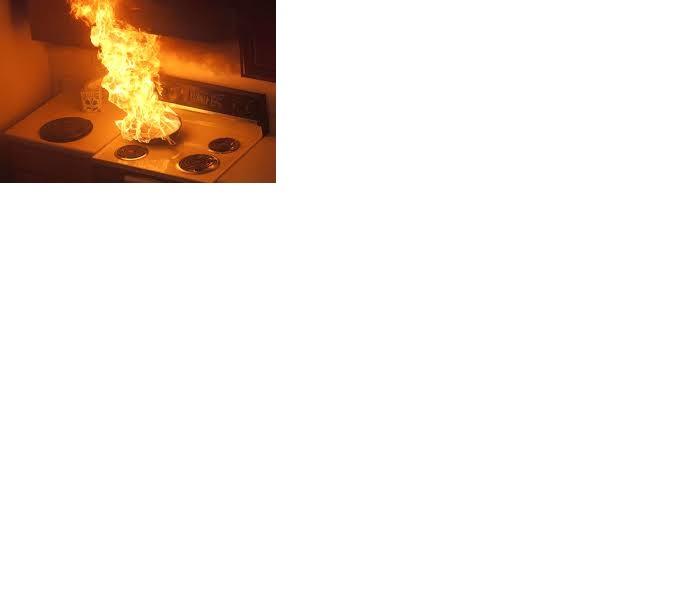 Which class does this cooking fire fall into?
Which class does this cooking fire fall into?
Not all fires are the same. They are caused by and thrive on different elements so, as a result, classes of fires came about. Classifications of fires are needed to determine how to extinguish them properly. You wouldn’t want to re-ignite or spread a fire by using the wrong type of extinguisher. Determining what class a fire is, is detrimental to using the proper equipment to extinguish it.
Class A involve ordinary combustibles such as paper, wood, plastics, cloth, trash and items that leave ash as a residue.
Class B fires are fueled by flammable or combustible liquids such as gasoline, propane, butane, paint and oil. Class B does not however include cooking oils or grease.
Class C are energized electrical fires which involve engines, transformers and appliances.
Class D fires are caused by combustible metals such as potassium, magnesium, titanium, sodium, and aluminum.
Class K fires are fueled by cooking oils, animal fat or grease. These normally occur in commercial kitchens.
In one of our previous blogs, you can read about the different types of extinguishers and which ones should be used for each specific class of fire.
Different Types of Fire Extinguishers
2/8/2016 (Permalink)
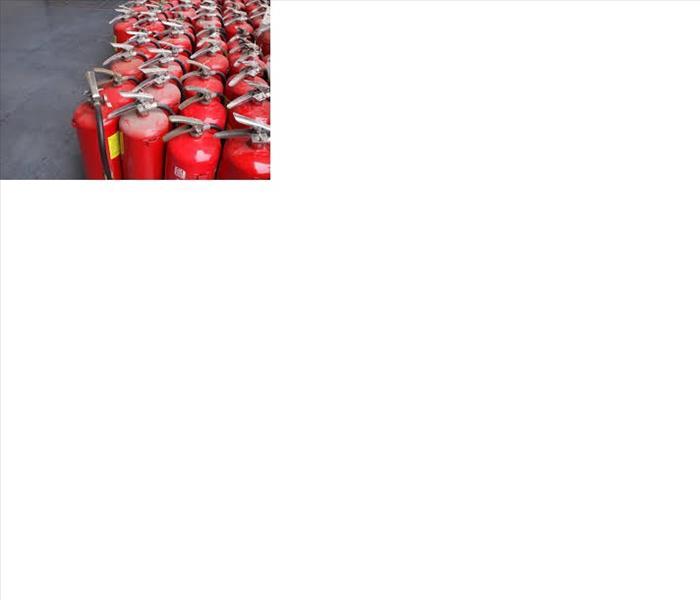 Fire Extinguishers.
Fire Extinguishers.
In order to understand why different fire extinguishers exist, first one needs to understand how a fire exists in general. Using the wrong extinguisher can even cause fires to re-ignite or spread in some cases.
The fire triangle is a model used to illustrate how fires start. The triangle includes 3 elements: oxygen, heat and fuel. Without these three elements, a fire cannot exist. Fire extinguishers are made to take away one or more of the three elements to cease the fire. Since there are different types of fuel involved in different fires, there are a variety of fire extinguishers one can use based on the source of the fire.
Dry Chemical is the most common fire extinguisher used today as it is effective on all types of fires and is most likely the one you have in your home or at your place of business. This type of extinguisher interrupts the chemical reaction by creating a barrier between the fuel source and the oxygen. This can be used on Class A, B and C fires.
Dry Powder extinguishers are similar to dry chemical in that they separate the fuel from the oxygen or remove the heat element of the fire. They are only used for combustible metal fires (Class D) and are ineffective on all other types of fires.
Clean Agent or Halogenated extinguishers use halon agents and halocarbon agents to interrupt the chemical reaction of the fire. Clean agent is mainly used for Class B and C however, it can be used on Class A as well. There are concerns regarding contamination when these are used which brings us to the next type of extinguisher…
Water Mist extinguishers are a newer development and extinguish the fire by taking away the heat component. These are much safer than clean agent extinguishers as no halocarbon is involved and are primarily for Class C but may be used on Class A fires as well.
Cartridge Operated Dry Chemical interrupt the chemical reaction of the three components in the fire triangle and create a barrier between the fuel and the oxygen components when used on Class A fires. This extinguisher is also effective on Class B and C fires.
Wet Chemical extinguishers are unique in that they remove the heat component and prevent re-ignition by creating a barrier. These extinguishers are used for Class K fires which typically involve deep fryers and commercial cooking operations but may also be used for Class A fires in commercial kitchens as well.
Water and Foam extinguishers not only take away the heat element but the foam separates the oxygen from the other elements. These are used in Class A fires only and should never be used in Class B or C. If used in a B or C classified fire, there is a risk of spreading and not extinguishing the fire.
Carbon Dioxide fire extinguishers remove the oxygen first and secondly, remove the heat with cold discharge. They can be used on Class B and C fires but aren’t normally effective on Class A fires.
Fire extinguishers exist for your safety but if used improperly, may cause more damage. Make sure you know what kind of fire extinguisher you have and what types of emergencies it should and should not be used for.
Top Causes of Home Fires
1/14/2016 (Permalink)
According to the National Fire Protection Association (NFPA), home fires are the leading cause of all fire deaths in the United States. For the most part, home fires are easily preventable.
Here are the top causes of home fires.
1.Cooking equipment. This may seem like a no brainer but believe it or not, cooking equipment is the leading cause of all home fires. Do not leave the stove or oven unattended while cooking. If you do need to leave the room, even for a second, make sure there are no flammable items such as dish rags,cookbooks, grease, curtains or paper products near your appliances. It’s always a good idea to keep a fire extinguisher in the kitchen as well, just in case.
2. Heating, the second most common cause of home fires. Most fires involving heaters are caused by portable space heaters. They may be nice and convenient but blankets, lint and other flammables can easily get caught in them. If you have to use a space heater, make sure there are no loose materials that could easily burn around it.
3. Smoking. Cigarette’s and their ashes can easily catch on curtains, bedding and clothing which can quickly result in an out of control fire. Many fires caused by smoking happen in the bedroom when someone falls asleep with a cigarette in their hand. If you must smoke, do so outside your home for the safety of everyone involved.
4. Electrical fires can happen for a variety of reasons. Here are the top four:
- Never remove the grounding plug on an appliance. Three pronged plugs exists on appliances that need extra power to operate. Get an electrician to install the proper outlet if you find this a problem in your home.
- Lamps and light fixtures. You should never install a bulb with wattage that is too high for a particular appliance. This will cause the bulb to overheat and in turn, catch the lampshade or other flammables nearby on fire. Another thing to avoid is covering your lamp shade or fixture with a cloth or paper. While it may look nice, it’s not worth the potential fire you may cause.
- Faulty cords and outdated appliances. Never use a cord that is worn or frayed. For this reason, you should also avoid running cords under rugs where they could become worn and go unnoticed for a long amount of time.
- Last but not least, outdated wiring. If your home is more than twenty years old, you may want to have a licensed electrician take a look at the wiring system. While replacing the system can get costly, it is nothing compared to a life or the belongings you could lose if the old wiring causes a fire.
Take the time to look around your house and ensure the safety of your friends and family by checking these common fire causes. Do you have a fire extinguisher? A working smoke alarm? How about a carbon monoxide detector? While it may seem tedious to check these items and think ahead, you will be able to sleep more soundly at night knowing you did.






 24/7 Emergency Service
24/7 Emergency Service

















